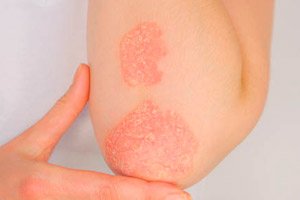
All iLive content is medically reviewed or fact checked to ensure as much factual accuracy as possible.
We have strict sourcing guidelines and only link to reputable media sites, academic research institutions and, whenever possible, medically peer reviewed studies. Note that the numbers in parentheses ([1], [2], etc.) are clickable links to these studies.
If you feel that any of our content is inaccurate, out-of-date, or otherwise questionable, please select it and press Ctrl + Enter.
Prolonged exposure to polluted air doubles the risk of developing psoriasis
Last reviewed: 02.07.2025
 ">
">In a recent study published in JAMA Network Open, researchers examined the association between long-term exposure to air pollution and the development of psoriasis, as well as how genetic predisposition may influence this association and the risk of developing psoriasis.
The study found that long-term exposure to various air pollutants significantly increases the likelihood of developing psoriasis, especially in people with a genetic predisposition.
Psoriasis is a common skin condition that causes persistent redness, itching, and discomfort. It is an autoimmune disease, meaning it is caused by immune reactions.
Because psoriasis is a chronic condition, it can cause significant physical and economic burden and may be associated with other health problems such as cardiovascular disease and arthritis. Although there is no cure, existing treatments focus on symptom management, but are often associated with side effects and high costs.
The prevalence of psoriasis is increasing, particularly in high-resource countries, making it a growing public health problem. Previous studies have shown a link between short-term air pollution and increased psoriasis-related hospitalizations in countries such as China, South Korea and Italy.
However, there are limited data on the long-term effects of air pollution and its interaction with genetic factors on the risk of developing psoriasis.
The researchers examined the association between long-term exposure to various air pollutants and the incidence of psoriasis using data from the UK Biobank, a large database of more than 500,000 participants aged 37 to 73 years, focusing on how genetic predisposition may influence this risk.
The study included participants without psoriasis at study entry and excluded those with missing data, resulting in an analysis of 474,055 participants.
Air pollution data, namely fine particulate matter less than 2.5 micrometres in diameter (PM2.5), particulate matter less than 10 micrometres in diameter (PM10), nitrogen dioxide (NO2) and nitrogen oxides (NOx), were collected from the UK Department for Environment, Food and Rural Affairs and matched with participants' residential history.
Genetic risk was assessed using polygenic risk scores (PRS), which combine the effects of many small genetic variations to estimate an individual's likelihood of developing psoriasis. Cases of psoriasis that developed during the study were identified through medical records and self-reports.
The researchers used statistical models that allowed for changes over time to estimate the association between air pollution, genetic risk, and the development of psoriasis. They adjusted for factors such as age, sex, ethnicity, lifestyle, and medical history. The models treated air pollutant levels as continuous measurements and divided them into four groups based on exposure levels. They examined how genetic risk and air pollution together affected the risk of developing psoriasis.
To ensure the robustness of the results, the researchers conducted additional analyses to test for hidden influences, further focusing on participants who lived at the same address throughout the study period.
Participants, with an average age of 57, were followed for nearly 12 years. During that time, 4,031 new cases of psoriasis were identified. People who developed psoriasis tended to have a higher body mass index (BMI), hypertension, high cholesterol, diabetes, were male, smoked, and were less physically active.
The researchers found that higher levels of air pollutants were associated with an increased risk of developing psoriasis. The risk was highest for those who lived in areas with the highest levels of these pollutants. For example, people in the most polluted areas for PM2.5 had twice the risk compared to those who lived in the least polluted areas.
In addition, genetic factors also played a significant role. Participants with a PRS indicating a greater genetic predisposition had a higher likelihood of developing psoriasis. The combined effect of high genetic risk and high air pollution significantly increased the likelihood of psoriasis, with the highest risks observed in those with both a high genetic predisposition and high exposure to pollutants.
The researchers found that long-term exposure to air pollution and genetic predisposition significantly increased the risk of developing psoriasis. This association suggests that both environmental factors and genetics play important roles in the development of this skin condition. Previous studies have focused primarily on short-term effects, while this study provides a comprehensive, long-term analysis.
Strengths of the study include its large sample size and use of detailed genetic data, allowing for robust conclusions to be drawn. However, limitations include potential selection bias, a focus on a predominantly white European population, and the failure to account for indoor or workplace air pollution. The observational nature of the study means that causal inferences should be made with caution.
Future studies should examine these associations in more diverse populations and include detailed individual exposure assessments. The findings highlight the need for targeted interventions to reduce air pollution exposure, particularly for individuals with high genetic risk, to potentially prevent psoriasis.
